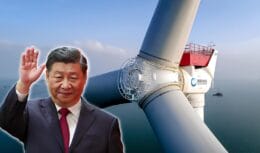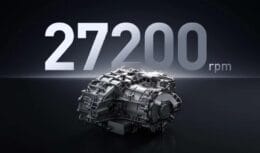
Origami Solar has developed a new panel for the production of solar energy whose aim is to reduce carbon dioxide emissions in the environment by up to 94%, surpassing existing technologies. In short, the current aluminum panels have a height of 40 cm while this new development allows for an even thinner technology, around 35 nm, using steel.
Steel presented results considered more satisfactory in several aspects, from rigidity to stability or production compatibility. Another aspect is that, with the use of this new material, which until then was not used in panels for the production of solar energy, it is possible to have an exponential reduction in costs, which can help companies in their energy transition processes.
“The [steel] structures did a better job of protecting the laminate from cell crack initiation and propagation, which is critical for reliable long-term power production,” said Samuel Truthseeker, Founder and Principal Engineer at TECSI Solar. “Our office concluded that the Origami steel structure is a suitable candidate for replacement of extruded aluminum photovoltaic module structures and can provide significantly better performance if properly designed.”
Decreased dependence on China for the production of photovoltaic panels to transition to solar energy use
Currently, the Chinese dominate a large part of aluminum production, making many countries dependent. However, with this new discovery, other countries will also be able to help in the energy transition by supplying a cheaper and more rigid metal [steel], thus reducing the dependency that many countries have for the production of photovoltaic solar panels.
With the use of steel in the domestic chain, it is possible to reduce the risk of aluminum shortages. The shortage could send the metal to a new high with its high searches.
An article that was published by Boundless Impact Research and Analytics shows very interesting data, since, with the use of steel for the production of solar energy, it is possible to reduce CO2 emissions by up to 94% when the metal is produced in Germany or 87% as much metal is produced in the United States.
Many solar panel technologies are being created for the cheapest energy transition
Many solar panel technologies are being developed to have a cheaper energy transition coming from companies. A clear example of this is in relation to the Mexican startup Greenfluidics, which would have developed a photovoltaic panel capable of producing energy and reducing the release of carbon dioxide through seaweed. In summary, it would work as follows:
- Seaweed carries out its process of photosynthesis and, with that, there is the release of energy that will be converted for domestic use.
- In order for energy to be formed, it is necessary for algae to remove a high load of carbon dioxide from the environment, that is, while reducing dependence on coal and other unsustainable matrices, they help in the production of O2 through the photosynthesis process.
Another prominent company is the German RWE, which has been studying ways to bring sustainable and renewable energy to offshore environments. The institution is developing an ultra-light and thin solar panel that could be suspended in seawater. One of the positive sides is that they can be spread in large quantities like marine rugs. Therefore, it would not be occupying space on land.











